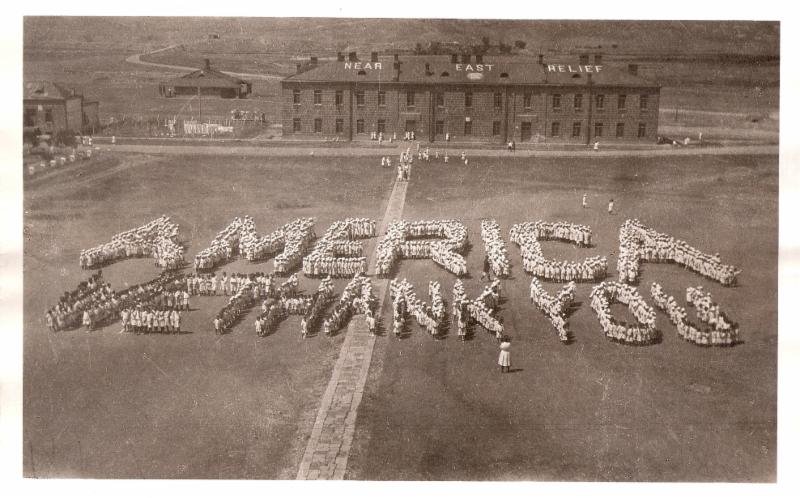LEXINGTON, Mass.—On Sun., April 12, the National Association for Armenian Studies and Research (NAASR), in partnership with the Near East Foundation, will present a special program entitled, “Near East Relief and Its Legacy: A Century of Service to Armenians and to Humanity,” at the National Heritage Museum in Lexington. The event is made possible by a generous donation by Peter Palandjian.

During the darkest hour of the Armenian people, the genocide of 1915, the organization that provided the most generous and effective assistance was Near East Relief (NER). Formed solely to alleviate the plight of the Armenians and other victims of Ottoman violence, NER was established by a group of American business executives, academics, religious leaders, and political figures who felt compelled to take action. That support will be commemorated and explored in the April 12 program.
In its 100 years, the Near East Foundation, as NER is now known, pioneered humanitarian assistance abroad and continues to do so today. The program will include presentations on the history of Near East Relief in the immediate aftermath of the genocide, presented by Shant Mardirossian, chairman of the Board of the Near East Foundation, and Dr. Suzanne Moranian, historian and member of the NAASR Board of Directors. Dr. Charlie Benjamin, president of the Near East Foundation, will discuss its current work in the Middle East, Africa, and Armenia, while Molly Sullivan, director and curator of the Near East Relief Society, an educational initiative of NEF, will present its commemorative and archival preservation projects. Also participating will be dignitaries including Armenian Ambassador to the United Nations Zohrab Mnatsakanyan.
Created in 1915 as the American Committee for Armenian and Syrian Relief in response to the call from Ambassador Henry Morgenthau for the United States to provide assistance to the surviving victims of the genocide of Armenians and other Christians, including Assyrians and Greeks, in the Ottoman Empire, the group was responsible, between 1915 and 1930, for saving hundreds of thousands of lives. As the United States’ oldest non-sectarian international development non-governmental organization, the Near East Foundation has played a crucial role in establishing the American philanthropic tradition, and pioneered many of the strategies employed by the world’s leading development organizations today.
“As we mark the Centenary of the Armenian Genocide, the darkest days in our history, it is important to remember that there was also a tremendous humanitarian undertaking to save lives,” said NAASR Director of Academic Affairs Marc A. Mamigonian. “This is part of Armenian history, but it is also an important part of American and world history,” he said. “And never before had such an effort been made to save and to rebuild lives. It is also important for us to know that the work of the Near East Foundation continues today in parts of the world that are in need of such humanitarian assistance as was the case one hundred years ago.”
The event begins at 2 p.m. at the National Heritage Museum, 33 Marrett Rd., in Lexington (at the intersection of Route 2A and Massachusetts Avenue). The program is free and open to the public, and will be followed by a reception. For more information, contact NAASR by calling (617) 489-1610 or e-mailing hq@naasr.org.



The article’s accompanying photograph was taken just after WW1 had ended, at Alexandropol (Gyumri), in the parade ground of the Russian barracks located at the edge of the town. In other photos in the series the Russian military church (which still survives) can be seen in the background.